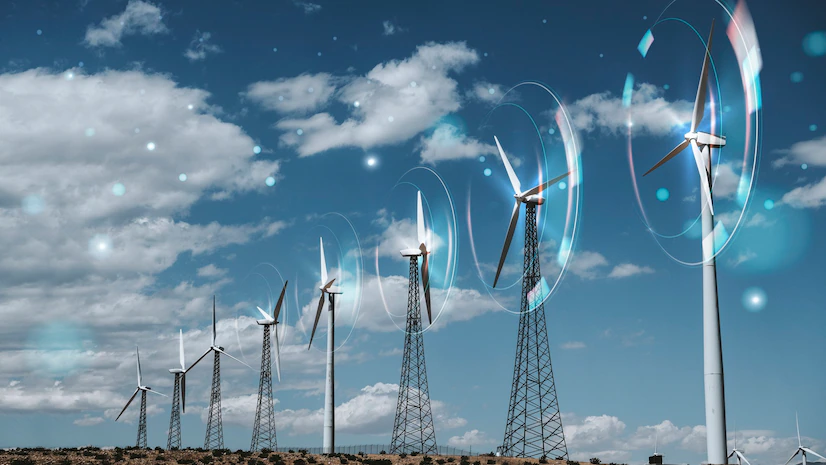wind energy


Wind energy is a form of solar energy, about 2% of the sun's energy reaching the Earth is converted into wind
The sun heats the earth at different temperatures at the sea and the land, so the hot air rises to the top and the cold air descends to the bottom, forming winds
The air in contact with water differs in its temperature from the air in contact with the land. The difference in the specific temperature of the land and the sea causes the hot air to rise above the land during the day due to its low density, and its place is replaced by the denser sea air, which leads to land and sea breezes day and night because the sea stores heat. The mountain and valley breeze is also formed due to the difference in temperature between the mountain and the valley
Wind is available in coastal areas, slopes The wind blows more during the day than at night, and in winter more than in the summer We can exploit wind energy by using wind turbines, which are devices that convert wind energy into electrical energy
It has a wide field and is considered the most type of energy that continues to develop. The wind speed suitable for generating electrical energy is 6.9 m/s and this speed is economically appropriate
1) Suitable wind speed for the type of turbine used
2) It should be in an empty area without any obstacles
3) It is preferable that the site be close to the power lines so that the cost of connection is low
4) It is preferable that the site be close to the facilities so that it can be implemented without obstacles and so that the project does not bear the cost of infrastructure
Analyzing and determining the ideal locations for wind turbines and their resources requires accurate data for long periods of up to ten, in addition to knowing the roughness and quality of the ground and the surrounding terrain.
Economic factors affecting wind power generation System efficiency, production quantity, and initial system cost Wind energy is cheap and economically competitive with other energy sources
Location factors
used machine prices
The country's energy policies
Wind speed at the site
Wind energy does not pollute the air or water with harmful gases, does not produce hazardous waste, and does not consume water Among its disadvantages are the visual impact, the consumption of land, the impact on marine creatures and birds, the collision of ship